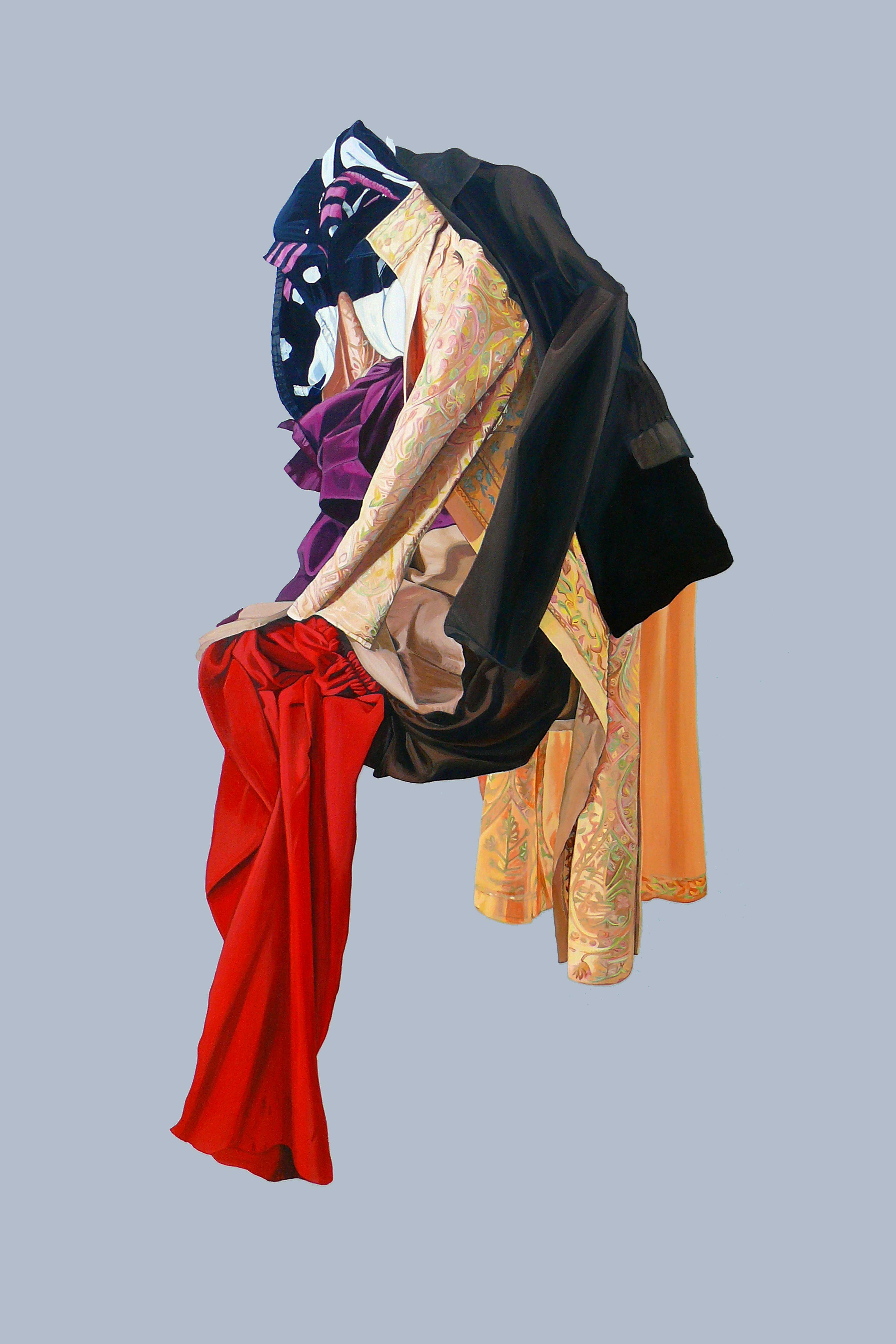The two photos show rows of the same apple orchard in the hills above Franzensfeste, South Tyrol. The top photo showing the apple blossoms was taken in late April, 2020, while the bottom one is from late September. The apples will be picked any day now.
Where intersectionality meets universality
 by Callum Watts
by Callum Watts
Do identity politics and intersectionality clash with the idea of universal principles? There seems to be a rift emerging in left wing politics around precisely this point. On the one hand various organised identity groups are making it increasingly difficult to ignore the real effects of institutionalised prejudice on their lives. It seems like it’s only through the elevation of particular identities that these interests will be protected, and certain progressive goals reached. These movements reproach, often correctly in my view, the champions of universal rights and freedom as being coded as white, cis, able bodied and male. On the other hand there is a real concern that the elevation of particular identities prevents solidarity between different groups who have otherwise shared interests. This seems to be happening top down as politicians seek to exacerbate these identity markers to consolidate their supporters, and also bottom up as individuals see solidarity as being limited to others who belong to their own perceived identity groups.
It’s worth noting that these two views do not logically contradict each other. It is possible that identity based organising is key to raising the visibility of and guaranteeing rights for certain groups, whilst it also being true that doing this can inflame tensions between different groups and obscure shared interests. Whilst this is to be expected in the broader culture war between left and right, in progressive left circles this division is causing both soul searching, and increasingly, acrimony. There appears to be a reaction against identity politics coming from both the far left and the centre left. If we can ignore the concern trolling (of which there is undoubtedly a lot), the centre left seems to worry about losing the centre ground to a right wing movement that is co-opting the language of universal rights. From the far left we see the worry that identity politics undermines the possibility of a class politics which aims at redistribution. Read more »
Forgotten Americans along the Susquehanna River
by Carol A Westbrook

The smoke of a thousand campfires… That’s what you’d find 600 years ago in the Wyoming Valley of Northeastern Pennsylvania, now the site of Wilkes-Barre and a couple of dozen smaller cities and towns. At the time Columbus visited America, the First People were comfortably settled in this area, which was a permanent home for many tribes, and a winter home for others. The name of this beautiful valley, Wyoming, comes from the Lenape name meaning “at the big flat river.” The big flat river referred to was the Susquehanna, which itself is named for the Susquehannock Indians, who lived along its banks. The Susquehanna is the longest non-navigable river in the US, providing little in the way of commerce and transportation for anything but small boats and canoes.
Don’t get the idea that it was all peace and harmony in the valley. There was friction among the various tribes of Indians, as incoming colonists of the 1700’s competed for resources, while displaced East Coast tribes who were moving in to the area threatened others. The migrating East Coast tribes were primarily Algonquin: Lenape, Delaware, Mahican, Shawnee, and Mohican; they, in turn, displaced the Susquehannock and Nanticoke Indians, peaceful tribes who lived quietly along the river.
And it wasn’t just the native tribes who were threatened. There was also conflict between settlers, as those from Connecticut (Yankees) fought those from Pennsylvania (Pennamites) for land each felt belonged to them, having been included in each colony’s original charter, due to oversight and inadequate surveying. These little-known conflicts, known as the Yankee-Pennamite Wars, were easily as bloody as any of the Indian battles. Fighting continued into the Revolution, though surprisingly both sides agreed to a truce so they could unite to fight the British. Even more surprising is that the conflicts were resolved after the resolution in the courts of law in the new United States of America, without a further drop of bloodshed. Among the few historic markers I found were two markers along the Susquehanna River marking the sites of the Connecticut and Pennsylvania fort, and they are only one quarter of a mile apart! Read more »
The Battle of Kashmir
by Rafiq Kathwari
 “Battle of Algiers”, a classic 1966 film directed by Gillo Pontecorvo, seized my imagination and of my classmates as well when it was shown three years later at the Palladium in Srinagar. A teenager wearing bell-bottoms, dancing the twist, I was a Senior at Sri Pratap College, named after Maharajah Pratap Singh, a Hindu Dogra ruler of Muslim majority Kashmir.
“Battle of Algiers”, a classic 1966 film directed by Gillo Pontecorvo, seized my imagination and of my classmates as well when it was shown three years later at the Palladium in Srinagar. A teenager wearing bell-bottoms, dancing the twist, I was a Senior at Sri Pratap College, named after Maharajah Pratap Singh, a Hindu Dogra ruler of Muslim majority Kashmir.
Would I fight to make Kashmir free? A classmate asked few days later when we met at the Premier Coffee House on Residency Road, the film fresh on our minds. Of course, I said, my heart leaping. He unfolded a poster:
‘Bear Arms Against a Sea of Troubles’
“This is our manifesto,” he said. I read on
‘Aims & Objectives: Demolish Bunkers * Occupy the Radio Station * Disrupt the Telephone Exchange *Ambush Convoys * Create a Pyramid of Freedom Fighters’
I had questions: how many boys in the group, who was our leader, where would we get arms, when will we act? “Don’t ask,” my classmate said, raising his arms. “Man proposes. Allah disposes.” I read on:
‘Our cause is freedom. India promised us a plebiscite to determine our own future, but broke her promise. She has jailed our leader, the “Lion of Kashmir,” because he roared for freedom. To the extent India denies us our birthright to that extent India subverts its own democracy.’
This was fantastic stuff. I was impressionable. If the Algerians could do it so could Kashmiris.
I signed the poster with a flourish. The coffee tasted sweeter than usual.
A week later, my teenage flirtation landed me in Central Jail where I met seven classmates who had also signed the manifesto. We later learnt that one poster had been brought to the office of the college principal, who had his own sword to sharpen, and he rang the police. Read more »
Film Review: Gore vs. Libido in Brandon Cronenberg’s Sci-Fi Sojourns
by Alexander C. Kafka
The Canadian Cronenbergs are body-horror royalty, and while father David has veered toward more straightforward dramatic fare, his earlier career is echoed uncannily by son Brandon.
No one should screen a Cronenberg film expecting to be merely entertained but rather provoked, intrigued, seduced, disgusted, and possibly outraged, occasionally all at the same time. With two features to his credit, Brandon, in his early 40s, is an interesting study in influence. He tackles societal and scientific concepts redolent of his father’s mid-career work but with the blood lust of Dad’s early films.
Consider Brandon’s first feature, 2012’s Antiviral, in which die-hard fans seek to be injected with the viruses afflicting the celebrities they worship. On one hand, the mechanics of that premise hark back to David’s parasitic Shivers (1975) and viral Rabid (1977), but the concept and pacing also nod to 1996’s celebrity-gore Crash.
Both writer-directors uneasily balance an almost gleeful shock-scoring sadism with a futuristic empathy, but Brandon’s equation so far still leans heavily toward the sadistic, and it will be interesting to see whether age counters or at least shades that aesthetic, as in David’s case, or whether it will crystallize it into a more polished heartlessness. Read more »
Monday, September 21, 2020
It Was Naive Ever to Invest Too Much Hope in the Supreme Court
by Joseph Shieber
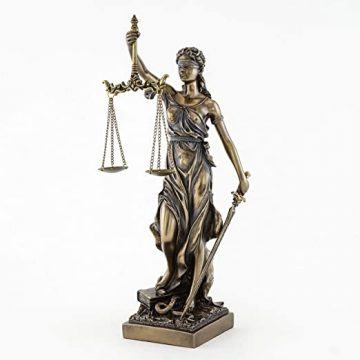 I remember as a child watching the made-for-tv movie Gideon’s Trumpet, based on the Anthony Lewis book of the same name about the Gideon v. Wainright (1963) Supreme Court decision that cemented the right to legal representation for criminal defendants. At the time, I was inspired by the idea that the Supreme Court was an arena that meted out justice as a reward for the rightness of one’s arguments — even if the person making those arguments was an untutored prison inmate.
I remember as a child watching the made-for-tv movie Gideon’s Trumpet, based on the Anthony Lewis book of the same name about the Gideon v. Wainright (1963) Supreme Court decision that cemented the right to legal representation for criminal defendants. At the time, I was inspired by the idea that the Supreme Court was an arena that meted out justice as a reward for the rightness of one’s arguments — even if the person making those arguments was an untutored prison inmate.
That made-for-tv movie appeared in 1980. Within just a few years, that sort of adulatory attention to the Supreme Court and its role in guaranteeing civil liberties would seem quaint.
In a recent piece in The Bulwark, Adam J. White gives a representative account of the Republican perspective on what happened next:
Over three decades, Democratic Senators ratcheted up the stakes at every turn, with Republicans almost always playing catch-up. In 1987, barely one year after the Senate confirmed Antonin Scalia’s appointment to the Court with a 98-0 vote, Senator Kennedy and his colleagues blindsided the Reagan administration with an unprecedented declaration of total war against Robert Bork. Even after Bork, and the failed war on Clarence Thomas, Senate Republicans did not react in kind: they joined Senate Democrats in confirming Ruth Bader Ginsburg 96–3, and Stephen Breyer 87–9. Senate Republicans would not begin to return fire on Democratic nominations to the Supreme Court until 2009, after the heated Roberts and Alito hearings.
Whether White’s account is the result of ignorance or selective memory for rhetorical effect, the only way that the recent lack of comity over presidential Supreme Court nominations could even conceivably be charged to the Democrats is if we limit our historical survey to the past three decades.
Monday Poem
God gave names to all the animals,
in the beginning, in the beginning
…………………….….. —Bob Dylan
Yclept
to be called anything,
to be called, Jim, for instance,
is to be tagged for life
unless you choose otherwise
and pull a new name from a hat;
a new you —say, Ed, which would amount
to a tangle of official undoing
as bureaucrats mined reams of documents
to remake an identity with digital white-out
in a shitstorm of confusion to fashion a new you
when it would be more direct,
though sweatingly more difficult
(wrenching perhaps, perhaps
impossible) to turn your heart and head
inside out and scour what is feckless,
cramped, and sour into gleaming radiance
as when you slid new into the world
so that a new name would be redundant
and need never to be said —or
start young
Jim Culleny
9/16/20
The venerable prejudice against manual labour
by Emrys Westacott
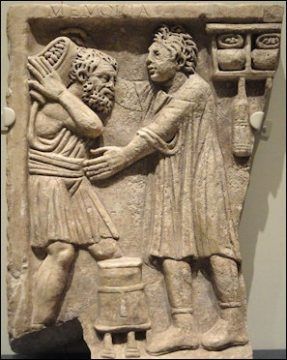 Whether or not a certain line of work is shameful or honorable is culturally relative, varying greatly between places and over time. Farmers, soldiers, actors, dentists, prostitutes, pirates and priests have all been respected or despised in some society or other. There are numerous reasons why certain kinds of work have been looked down on. Subjecting oneself to the will of another; doing tasks that are considered inappropriate given one’s sex, race, age, or class; doing work that is unpopular (tax collector); or deemed immoral (prostitution), or viewed as worthless (what David Graeber labelled “bullshit jobs”), or which are just very poorly paid–all these could be reasons why a kind of work is despised, even by those who do it. One of the oldest prejudices though, at least among the upper classes in many societies, is against manual labour.
Whether or not a certain line of work is shameful or honorable is culturally relative, varying greatly between places and over time. Farmers, soldiers, actors, dentists, prostitutes, pirates and priests have all been respected or despised in some society or other. There are numerous reasons why certain kinds of work have been looked down on. Subjecting oneself to the will of another; doing tasks that are considered inappropriate given one’s sex, race, age, or class; doing work that is unpopular (tax collector); or deemed immoral (prostitution), or viewed as worthless (what David Graeber labelled “bullshit jobs”), or which are just very poorly paid–all these could be reasons why a kind of work is despised, even by those who do it. One of the oldest prejudices though, at least among the upper classes in many societies, is against manual labour.
The word “manual” derives from manus, Latin for “hand,” and even in English the linguistic connection between physical labor and “hand” persists: we still speak of “farmhands” or “factory hands.” But the concept of manual labor extends to any kind of work that requires bodily strength, or where the physical aspect of the activity is thought to greatly outweigh the cerebral. This sort of work has been looked down on by social elites in many societies from time immemorial. Some reasons for this are fairly obvious. Manual labor is often dirty, unhealthy, exhausting and unpleasant; much of it is also unskilled, tedious, and poorly paid. These are all seen as good reasons for avoiding it if possible, at least as a way to make a living. So it is generally assumed (at least by the privileged few who don’t have to do it) that those who spend their days engaged in work of this kind probably have little choice: they must be either slaves, or serfs, or people of limited ability who are unable to find a better way to put food on the table. And even if they start out with a capacity for “higher things”–like delicate feelings, or moral virtue– long hours of menial drudgery will crush it out of them. Read more »
Perceptions
Fake News and Phase Transitions: The Physics of Social Interaction
by Jochen Szangolies

Aristotle characterized humans as zoon logon echon, the rational animal. In general, we like to believe that our opinions are formed through reason—that we have arrived at them by means of a process of weighing the alternatives, selecting that which we deem most appropriate. This implies a certain mutual intelligibility—I might not share your opinion, but I should be able to appreciate why you hold it.
Yet, with—it seems—increasing frequency, we find ourselves baffled by others’ opinions. Who could, in this day and age, earnestly believe that the Earth is flat? How can a president hold a nearly steady approval rating of over 40%, despite an unprecedented record of lies, scandals, and incompetence?
One might thus conclude that Aristotle somewhat overstated his case. But the issue is more complex: those holding odd beliefs are not typically less intelligent. An answer may be found in the way modern communication media have restructured society, leading to the process of opinion-formation no longer chiefly taking place at the individual, but at the collective level, largely unmoored from concerns of factuality and appropriateness. This is best understood by studying the physics of phase transitions. Read more »
Not Even Wrong #3: Reunion
by Jackson Arn
You are waiting for me to do something.
I can tell because your eyes have the look cheap mirrors get
when the edges rust and curl and there is nothing
to do but throw them out. You’re powerless,
yes, but at least not alone, if that makes
it better. In fact your rusted tilt
is kind of sexy in the stray antlered way
I’d thought improper, but I need to think more.
As soon as I can hear my voice I’ll use it
to make a paragraph, a soft one
to rest on, or a shield. That is my
defense, like spitting or a blowfish-ball—
can you blame me? The house was an oven
that night. Guests were planted
around each vase, yellow jackets for yellow flowers.
I thought I saw your eyes reply, so I pushed
until you heard the scenery collapse, and me.
And finding you here now,
the delay is tasteful and not too ironic.
Regret is for people who haven’t found a place
for everything—did you take me
for one of them? Me? My thighs are swollen
with the hibernation, my back is a red
canyon of dust and grooves
remembered to the ground that nursed me, and still
we repel daintily, like ruined magnets
whose squirming is a kind of family.
Even when you go away you follow me.
Your going’s written upside-down on me,
predictably, which is a type of comfort. I will stagger
through roped-off run-down hallways
I’ll bluff my way through mirrors
and find graffiti-less brick walls,
and enjoy the possibilities: number one,
somewhere you’re seeing the same
and building something clever with it,
or plain in the gruff Shaker way
I never understood—building, anyway,
with the same junk I’ve got. And two,
you never went back, never climbed through
the frame, never remembered anything, or remembered
you’d forgotten a thing that weighed something,
and are still waiting for me to do something.
Mies van der Rohe and the End of Birds
by Eric Miller

1.
My grandmother’s last dwelling smelled especially of aerosol hairspray and black currant preserves, a pair of odours that could epitomize, in a pinch, the domestic fragrance of provincial Ontario in the twentieth century. Toward the end of her independent life, she lived in a little box, a suburban tract house, and there I often sat plying a pencil on newsprint sheets cheap enough they threatened to flake and almost to burn up under my hands, so responsive was their yellow to the acidifying suggestion of time. Bending at her table, holding a ruler in hands revealed by this act to be minutely tremulous, I drew legions of little boxes—myself shut, the whole while, inside her own mere carton of a house. My diagrams, however, were simpler far than the design of her bungalow, for—remotely affected by some concept of modern architecture—I was going through a siege of trying to draw cubes and other parallelepipeds. I aimed for perspectival accuracy, exercised persuasively from many vantages on an attractive visual problem: the hexahedron. It happened the paper tore under the stiff pink frustration of an ageing eraser, or (after I had pared my implement’s tip) the lance-like point of sharpened graphite poked right through and broke on the grain of the tabletop. Now and then, a tear smudged my straight lines: a humble mammal dab, expressed helpless from brim glands to blur the incorruptible angles.
2.
In labouring thus over these basic solids, I must have had in mind the precedent of a particular architect. Although at last my grandmother’s house and my ideal drawings embodied the same repertoire of forms, I sought after a great elegance missing from her address. It was surely Mies van der Rohe, evangel of glass and the perpendicular, who inspired me, since his structures, for all their glistening giganticism, stood within range of even my representational ability. In fact, the new Toronto-Dominion Centre, downtown, provided a model. Fifty-six storeys tall! Just think, what is a Mies van der Rohe building?
It is a box.
A box of what?
Of windows, and therefore of light.
But does the box contain anything else?
According to its herald and conceiver, it is supposed to exemplify, not to contain, the truth. Read more »
Catspeak
by Brooks Riley
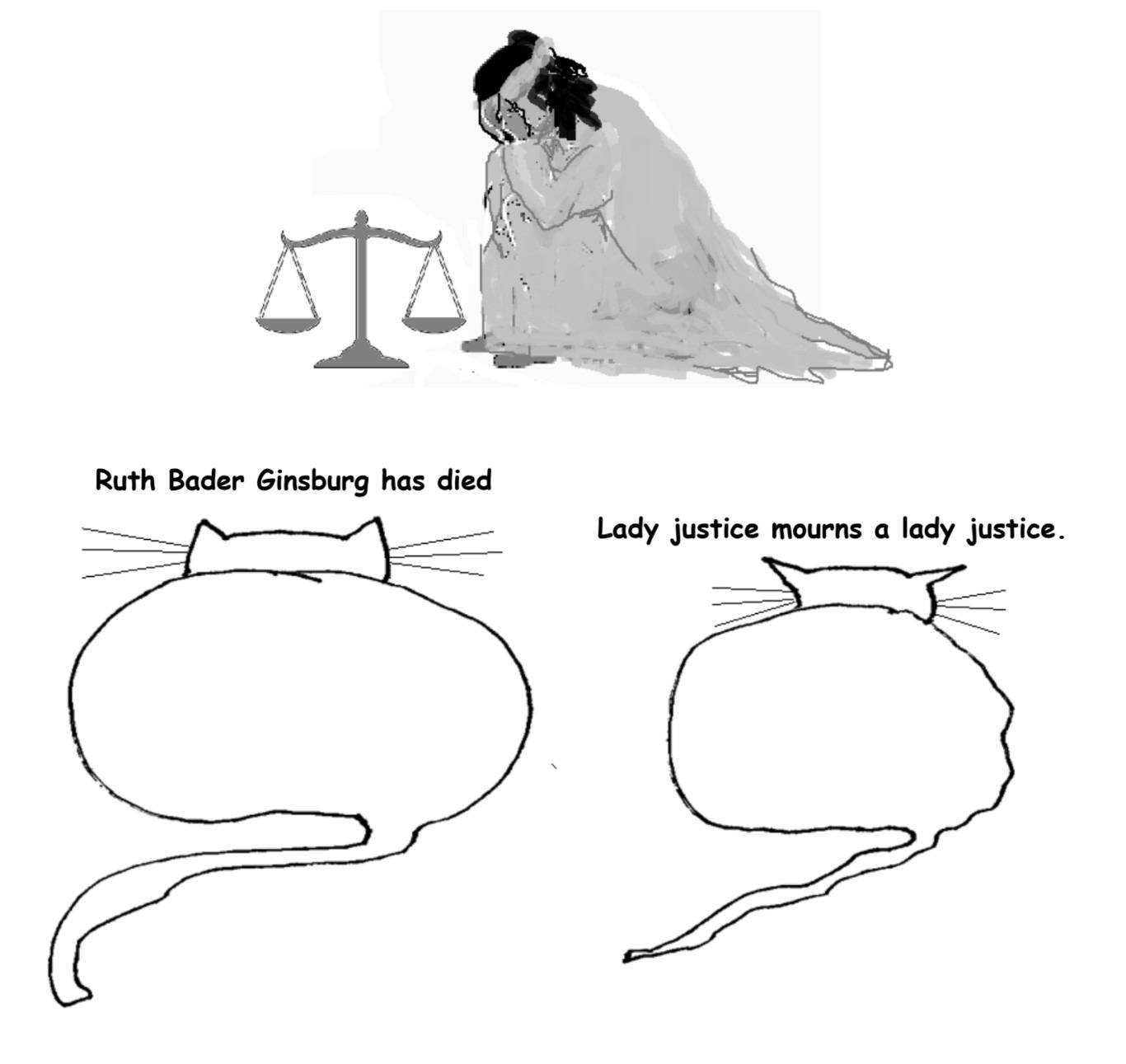
Film Review: A Turkish Director’s Orwellian Feature Debut
by Alexander C. Kafka
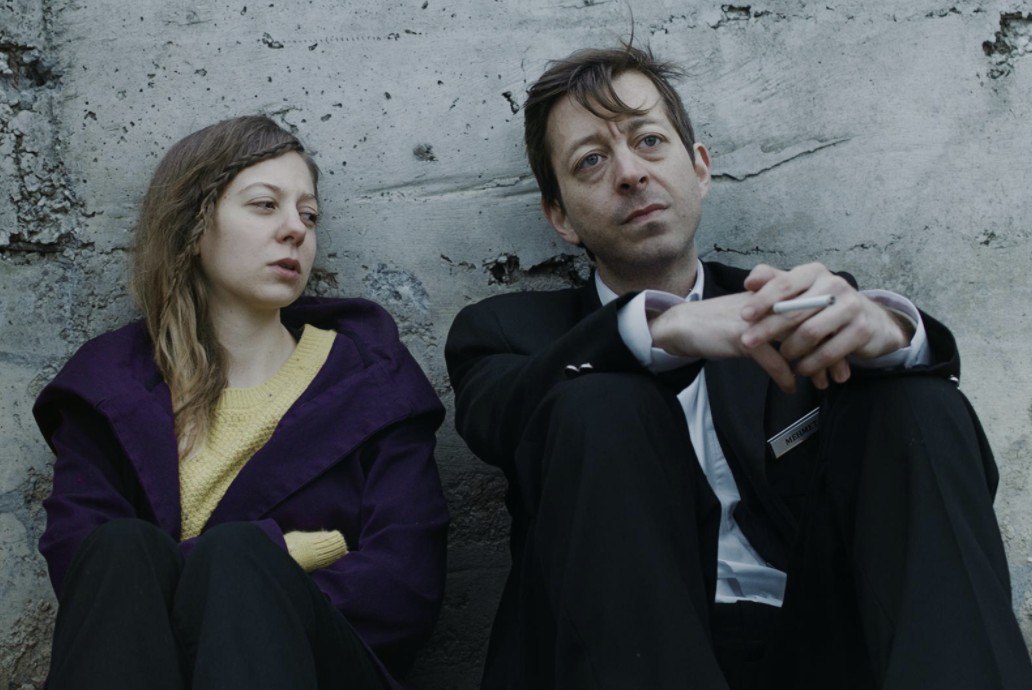
What do you get when you combine unrelenting nihilism with art-school swagger? The Antenna, the first feature film of Turkish writer-director Orçun Behram, a 2011 graduate of Columbia College Chicago who until now has worked on music videos, short films, and documentaries.
Ihsan Önal plays a heavy lidded, bug-eyed building superintendent named Mehmet. A dour insomniac prone to work-shift napping, he looks like Paul McCartney fused with Peter Lorre and Mr. Bean. Mehmet oversees, or rather undersees from a ground-floor observation booth, a towering apartment building on a windy tundra during an unspecified but late 70s/early 80s looking era. Mehmet is resigned to a pitiful life — “One also gets used to rotting,” he says to his teenage confidante, Yasemin (Gül Arici). He gives her a ticket to escape, though. In a stultified world, she has a wall of Post-it notes and push pins with strings attached — ideas, we deduce, that could take her places.
Mehmet’s bully of a boss, Cihan (Levent Ünsal), informs him that a government worker will install a mandatory dish antenna atop the building to carry a station that issues directives and bulletins. The insidiousness of the Orwellian project is clear from early on — not just an installation mishap but a dark sludgy goo that seeps supernaturally from the device into the structure below. It is, we learn, part of a wider multimedia takeover that encompasses radio and print as well. Read more »
Monday Photo
Taste Is Knowing the Tissue of Little Things
by Dwight Furrow
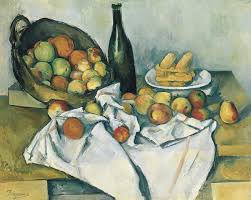 A life in which the pleasures of food and drink are not important is missing a crucial dimension of a good life. Food and drink are a constant presence in our lives. They can be a constant source of pleasure if we nurture our connection to them and don’t take them for granted.
A life in which the pleasures of food and drink are not important is missing a crucial dimension of a good life. Food and drink are a constant presence in our lives. They can be a constant source of pleasure if we nurture our connection to them and don’t take them for granted.
Because food and drink are an easily accessible source of pleasure, barring poverty or disease, to care little for them is a moral failure with consequences not only for the self but for others around us. However, to nurture that connection to everyday pleasure requires thought and restraint. Pleasure can be dangerous when pursued without reason and self-control. Addictive pleasures damage us and everyone around us. Addicts, in fact, cannot feel pleasure as readily as the non-addicted and require increasing levels of stimulation to find satisfaction. Addictions and compulsions are pathological and are no model for the genuine pursuit of pleasure. Thus, we need to make a distinction between pleasure that we get from thoughtless, compulsive consumption, and pleasure that is freely chosen. Pleasure freely chosen is actually a good guide to what is good for us and what should matter to us.
This emphasis on freely chosen pleasure is important not only for keeping us healthy but because certain kinds of pleasures are deeply connected to our sense of control and independence. Some of the pleasures in life come from the satisfaction of needs. When we are cold, warm air feels good. When we are hungry even very ordinary food will taste good. But such enjoyment tends to be unfocused and passive. We don’t have to bring our attention or knowledge to the table to enjoy experiences that satisfy basic needs. We are hard-wired to care about them and our response is compelled.
However, many pleasures are not a response to need or deprivation. We have to eat several times a day, but we don’t have to eat well several times a day. Pleasure freely chosen is essential to a good life because it expresses our independence from need. Read more »
Monday, September 14, 2020
Of Wanderers And Nomads
by Usha Alexander
[This is the third in a series of essays, On Climate Truth and Fiction, in which I raise questions about environmental distress, the human experience, and storytelling. All the articles in this series can be read here.]
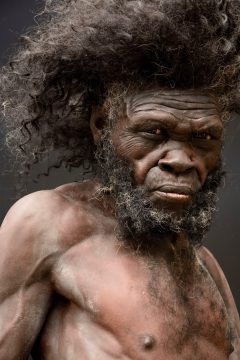 At the beginning of our story—paraphrased from an origin story remembered by a Cree elder—two figures are walking along the clouds. They’ve been walking long and far. Looking down through the spaces between the clouds, they spy a beautiful, green landscape, rich and inviting. They long to go down to this land, but they don’t know how to get down from the clouds. So the two keep walking. When at last they see a speck on the horizon, in the far distance, they walk toward it. The speck grows, looming larger than they are as they get nearer. When the two look up at it, it looks back down at them—it’s Great Spider.
At the beginning of our story—paraphrased from an origin story remembered by a Cree elder—two figures are walking along the clouds. They’ve been walking long and far. Looking down through the spaces between the clouds, they spy a beautiful, green landscape, rich and inviting. They long to go down to this land, but they don’t know how to get down from the clouds. So the two keep walking. When at last they see a speck on the horizon, in the far distance, they walk toward it. The speck grows, looming larger than they are as they get nearer. When the two look up at it, it looks back down at them—it’s Great Spider.
The people tell Great Spider how much they wish to climb down from the clouds and inhabit the land below, and they ask him for his help. So Great Spider begins to weave a web. He weaves and weaves and weaves, until he’s woven a boat. The two climb into the boat with Great Spider’s web still attached, and Great Spider lowers it down from the clouds. Despite his care, the boat rocks and sways precariously. After a long and harrowing downward journey, the boat ends up stuck in the top of a huge tree.
Now the Earth is almost within reach, but the people don’t know how to get down from the top of the tree. Below them they can see Caribou and other animals walking around. They call out for help, but none of the animals is able to help them. Finally, they ask Fisher-weasel, who scampers up the tree and carries each of them safely to the ground. Once they’re on the ground, Brother Bear befriends the people and teaches them everything they need to know as they make their way in this world. Read more »
The Bitter End and the Forever Now
by Akim Reinhardt
 There is a minor American myth about shame and regret. It goes like this.
There is a minor American myth about shame and regret. It goes like this.
In the years following Richard Nixon’s 1974 resignation amid scandal and disgrace, polls found that fewer Americans admitted to having voted for him than actually did. Apparently many former Nixon voters now realized the error of their ways and were embarrassed to admit ever having pulled the lever for him.
Everything about this story is false, and the truth of it is worse. Nixon’s loyal supporters stood by him the entire way, despite his crimes. His popularity did not retreat behind a wave of shame; it was merely muted by the national embarrassment of his resignation.
What does this tell us about today’s Trump supporters? Partisan divisions are much worse now than they were during the mid-1970s, so Trump voters’ fierce loyalty to this sexist, racist charlatan is unsurprising. But in explaining why, we tend to focus on the Cult of Trump, as if he has special qualities that give him some magical hold over his supporters. True, in many ways Trump is a unique politician in American history. Yet given our history, it seems likelier that his supporters’ undying devotion is less about the spells Trump casts, and more about the constancy of American political partisanship.
Indeed, the difference between Trump’s and Nixon’s loyal supporters might be more about decibel count than sentiment. And so by looking back at the steadfast support Richard Nixon maintained right through his resignation, we can better understand the misguided loyalty keeping Trump’s reelection campaign afloat. Read more »
Windmill-bashing Squared
by Jeroen Bouterse
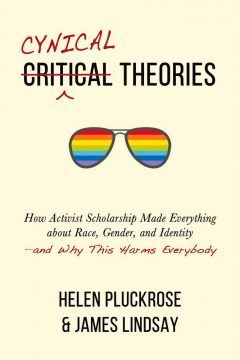 The most charitable, forward-looking take on the science wars of the 90s is Stephen Jay Gould’s, in The Hedgehog, the Fox, and the Magister’s Pox (2003), a delightful book about dichotomies between the sciences and humanities. His diagnosis is primarily that scientists have taken too literally or too seriously some fashionable nonsense, and overreacted; and if everybody can just calm down already, things will be alright and both sides could “break bread together” (108). Gould saw the science wars themselves as a marginal and slightly comical skirmish, almost a mere misunderstanding. “Some of my colleagues”, he said,
The most charitable, forward-looking take on the science wars of the 90s is Stephen Jay Gould’s, in The Hedgehog, the Fox, and the Magister’s Pox (2003), a delightful book about dichotomies between the sciences and humanities. His diagnosis is primarily that scientists have taken too literally or too seriously some fashionable nonsense, and overreacted; and if everybody can just calm down already, things will be alright and both sides could “break bread together” (108). Gould saw the science wars themselves as a marginal and slightly comical skirmish, almost a mere misunderstanding. “Some of my colleagues”, he said,
“have become legitimately disturbed by a few truly silly and extreme statements from the ‘relativist’ camp, largely made by poseurs rather than genuine scholars, and have mistaken these infrequent sound bites of pure nonsense for the center of a serious and useful critique. Then, falsely believing that the entire field of ‘science studies’ has launched a crazed attack upon science and the concept of truth itself, they fight back by searching out the rare inane statements of a few irresponsible relativists […] and then presenting a polemic defense of science, ultimately helpful to no one”. (99)
Gould saw an example of such “windmill-bashing” in P.R. Gross and N. Levitt’s Higher Superstition: The Academic Left and Its Quarrels with Science (1994). He also saw it in Alan Sokal’s famous hoax: a brilliant and funny parody, which Gould thought did not really prove much beyond the laziness of the editors that he hoodwinked.
I thought a lot of these 1990s events when I bumped into their 21st-century descendants: first, the ‘Sokal squared’ hoax two years ago, which insisted on taking all the fun out of Sokal’s joke by multiplying it twentyfold. And now Cynical Theories, the equivalent of Higher Superstition, in which two of the same three authors aim their lance at what they perceive to be the heart of intellectual evil: postmodernism. Postmodernism denies reality and universal truth, and thinks that all categories and concepts are therefore functions of group power. These core postmodern motifs have developed (like a “fast-evolving virus”) into actionable left-wing ideas, in the form of a proliferation of cynical, pessimistic and anti-enlightened theories in fields such as gender studies and queer studies. Read more »
Perceptions
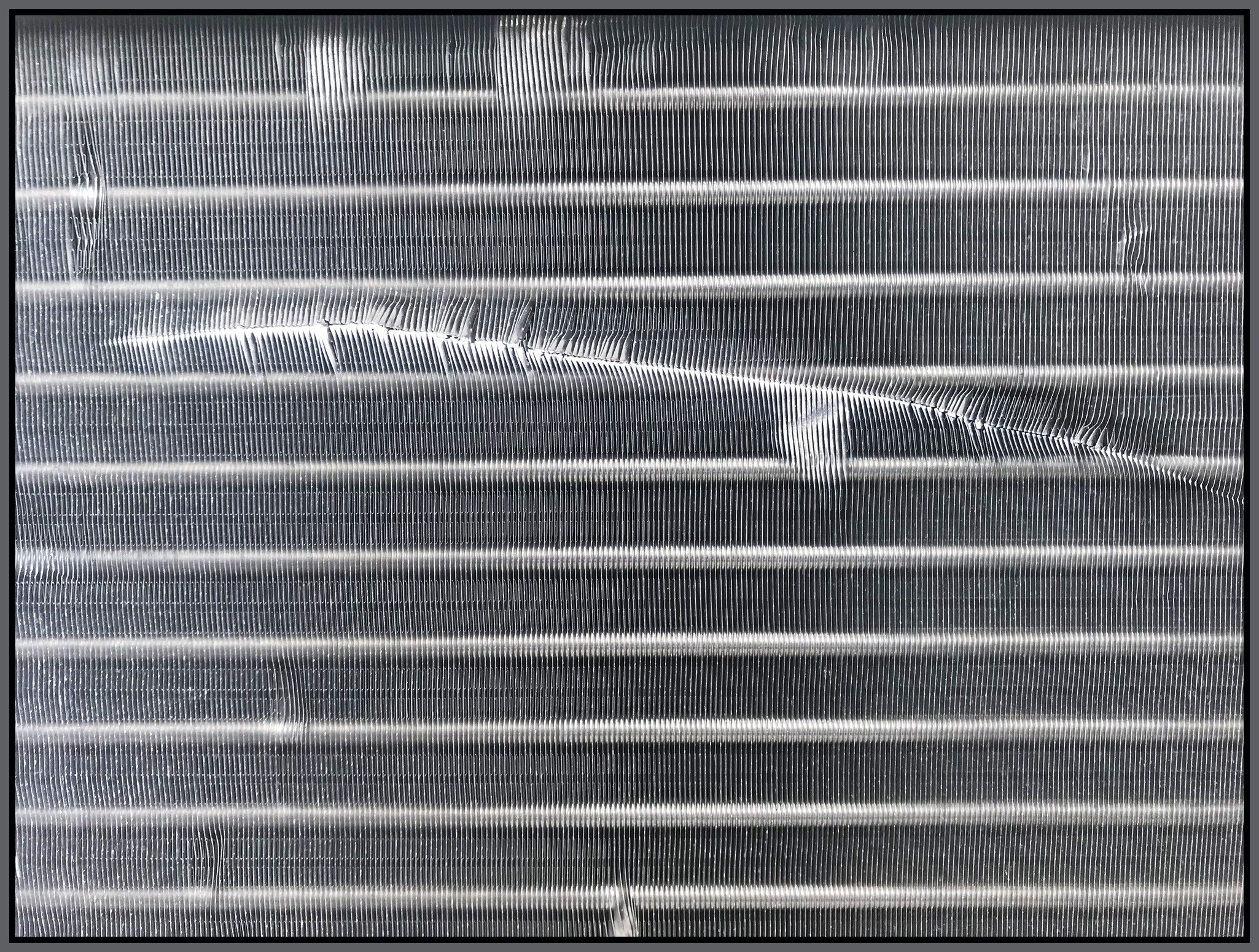 Sughra Raza. Light As a Feather. Boston, Sept 2020.
Sughra Raza. Light As a Feather. Boston, Sept 2020.
Digital photograph.



